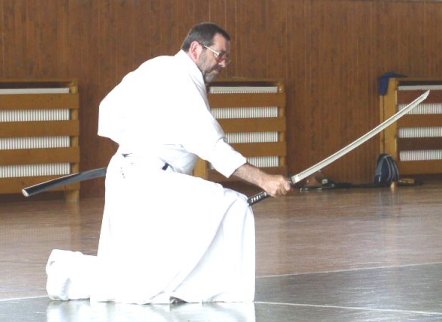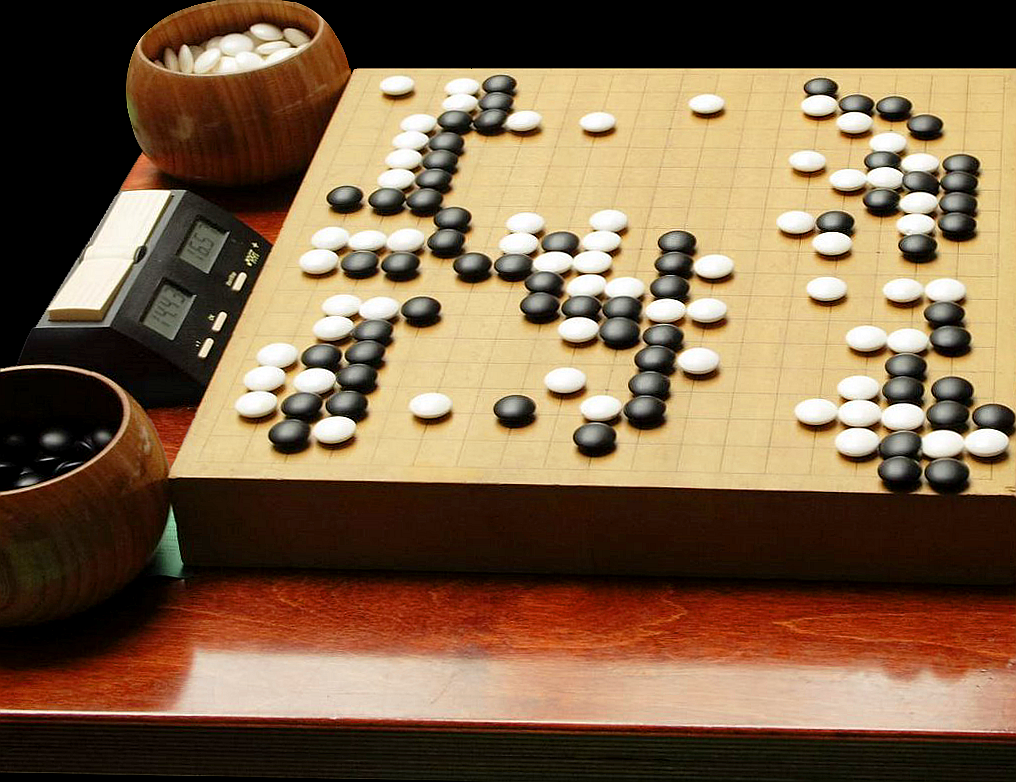|
Nicholas Raymond Cerio
Nicholas Raymond Cerio was an American martial artist. He was born in Boston, Massachusetts, on July 9, 1936, and died on October 7, 1998, in Warwick, RI. Biography Nick Cerio was born July 9, 1936, in Boston, Massachusetts. At a very young age, he took on many odd jobs to raise money to help support his family. At the age of 10, he moved with his family to the Federal Hill, Providence, Rhode Island. Martial arts training and lineage Early training In his youth Cerio initially became interested in boxing as a teenager. Cerio began martial arts training under George McCabe after being exposed to judo in the Air Force. Karazenpo Go Shinjutsu He then studied Karazenpo Go Shinjutsu under George Pesare and received his first black belt in May 1966. Cerio opened his first martial arts school, ''Cerio’s Academy of Martial Arts''. Through his participation in karate tournaments he came in contact with Edmund Parker. They would have a relationship that spanned nearly twenty ... [...More Info...] [...Related Items...] OR: [Wikipedia] [Google] [Baidu] |
Black Belt (martial Arts)
In East Asian martial arts, the black belt is associated with expertise, but may indicate only competence, depending on the martial art. The use of colored belts is a relatively recent invention dating from the 1880s. Origin The systematic use of belt colour to denote rank was first used in Japan by Jigoro Kano, the founder of judo in the 1880s. Previously, Japanese Koryu instructors tended to provide rank certificates only. Initially the wide obi was used. As practitioners trained in a kimono, only white and black obi were used. This kind of ranking is less common in arts that do not claim a far Eastern origin, though it is used in the Marine Corps Martial Arts Program. Relative rank Rank and belts are not equivalent between arts, styles, or even within some organisations. In some arts, a black belt may be awarded in three years or even less, while in others it takes dedicated training of ten years or more. Testing for black belt is commonly more rigorous and more centrali ... [...More Info...] [...Related Items...] OR: [Wikipedia] [Google] [Baidu] |
Kata
''Kata'' is a Japanese word ( 型 or 形) meaning "form". It refers to a detailed choreographed pattern of martial arts movements made to be practised alone. It can also be reviewed within groups and in unison when training. It is practised in Japanese martial arts as a way to memorize and perfect the movements being executed. Korean martial arts with Japanese influence (hapkido, Tang Soo Do) use the derived term ''hyeong'' (hanja: 形) and also the term ''pumsae'' (hanja: 品勢 hangeul: 품새). Kata are also used in many traditional Japanese arts such as theatre forms like kabuki and schools of tea ceremony (''chadō''), but are most commonly known in the martial arts. Kata are used by most Japanese and Okinawan martial arts, such as iaido, judo, kendo, kenpo, and karate. Background Kata originally were teaching and training methods by which successful combat techniques were preserved and passed on. Practising kata allowed a company of persons to engage in a strug ... [...More Info...] [...Related Items...] OR: [Wikipedia] [Google] [Baidu] |
Shotokan Karate
is a style of karate, developed from various martial arts by Gichin Funakoshi (1868–1957) and his son Gigo (Yoshitaka) Funakoshi (1906–1945). Gichin Funakoshi was born in Okinawa and is widely credited with popularizing "karate do" through a series of public demonstrations, and by promoting the development of university karate clubs, including those at Keio, Waseda, Hitotsubashi (Shodai), Takushoku, Chuo, Gakushuin, and Hosei. Funakoshi had many students at the university clubs and outside dojos, who continued to teach karate after his death in 1957. However, internal disagreements (in particular the notion that competition is contrary to the essence of karate) led to the creation of different organisations—including an initial split between the Japan Karate Association (headed by Masatoshi Nakayama) and the Shotokai (headed by Motonobu Hironishi and Shigeru Egami), followed by many others—so that today there is no single "Shotokan school", although they all bea ... [...More Info...] [...Related Items...] OR: [Wikipedia] [Google] [Baidu] |
Judo
is an unarmed gendai budō, modern Japanese martial art, Olympic sport (since 1964), and the most prominent form of jacket wrestling competed internationally.『日本大百科全書』電子版【柔道】(CD-ROM version of Encyclopedia Nipponica, "Judo"). Judo was created in 1882 by Kanō Jigorō () as an eclectic martial art, distinguishing itself from its predecessors (primarily Tenjin Shin'yō-ryū, Tenjin Shinyo-ryu jujutsu and Kitō-ryū jujutsu) due to an emphasis on "randori" (, lit. 'free sparring') instead of "kata" (pre-arranged forms) alongside its removal of striking and weapon training elements. Judo rose to prominence for its dominance over Kodokan–Totsuka rivalry, established jujutsu schools in tournaments hosted by the Tokyo Metropolitan Police Department (警視庁武術大会, ''Keishicho Bujutsu Taikai''), resulting in its adoption as the department's primary martial art. A judo practitioner is called a , and the judo uniform is called . The objective of co ... [...More Info...] [...Related Items...] OR: [Wikipedia] [Google] [Baidu] |
Sifu
Shifu () in Mandarin, or sifu in Cantonese, or sai hu in Hokkien, is a title for, and the role of, a skillful person or a master. The character 師/师 means "skilled person" or "teacher," while 傅 means "tutor" and 父 means "father." Though pronounced identically and bearing similar meanings, the two terms are distinct, and their usage is different. The former term, 師傅/师傅, bears only the meaning of "master," and is used to express the speaker's general respect for the addressee's skills and experience; it is, for instance, the term frequently used for cab drivers or other skilled laborers—thus, a customer may use this term to address an automotive mechanic. The latter term, 師父/师父, bears the dual meaning of "master" and "father," and thus connotes lineage in a teacher–student relationship. A tradesperson, for example, would address only their own teacher or master in this way; in the previous example, the mechanic's apprentice would address their master us ... [...More Info...] [...Related Items...] OR: [Wikipedia] [Google] [Baidu] |
Hachidan
The ranking system is used by many Japanese, Okinawan, Korean, and other martial art organizations to indicate the level of a person's ability within a given system. Used as a ranking system to quantify skill level in a specific domain, it was originally used at a Go school during the Edo period. It is now also used in most modern Japanese fine and martial arts. Martial arts writer Takao Nakaya claims that this dan system was first applied to martial arts in Japan by Kanō Jigorō (1860–1938), the founder of judo, in 1883, and later introduced to other East Asian countries. In the modern Japanese martial arts, holders of dan ranks often wear a black belt; those of higher rank may also wear either red-and-white or red belts depending on the style. Dan ranks are also given for strategic board games such as Go, Japanese chess (''shōgi''), and renju, as well as for other arts such as the tea ceremony (''sadō'' or ''chadō''), flower arrangement (''ikebana''), Japanese callig ... [...More Info...] [...Related Items...] OR: [Wikipedia] [Google] [Baidu] |
Kung Fu
Chinese martial arts, often called by the umbrella terms kung fu (; ), kuoshu () or wushu (), are multiple fighting styles that have developed over the centuries in Greater China. These fighting styles are often classified according to common traits, identified as "families" of martial arts. Examples of such traits include ''Shaolinquan'' () physical exercises involving All Other Animals () mimicry or training methods inspired by Old Chinese philosophies, religions and legends. Styles that focus on qi manipulation are called ''internal'' (; ), while others that concentrate on improving muscle and cardiovascular fitness are called ''external'' (; ). Geographical association, as in ''northern'' (; ) and ''southern'' (; ), is another popular classification method. Terminology ''Kung fu'' and ''wushu'' are loanwords from Cantonese and Mandarin respectively that, in English, are used to refer to Chinese martial arts. However, the Chinese terms ''kung fu'' and ''wushu'' (; ) ha ... [...More Info...] [...Related Items...] OR: [Wikipedia] [Google] [Baidu] |
Yondan
The ranking system is used by many Japanese, Okinawan, Korean, and other martial art organizations to indicate the level of a person's ability within a given system. Used as a ranking system to quantify skill level in a specific domain, it was originally used at a Go school during the Edo period. It is now also used in most modern Japanese fine and martial arts. Martial arts writer Takao Nakaya claims that this dan system was first applied to martial arts in Japan by Kanō Jigorō (1860–1938), the founder of judo, in 1883, and later introduced to other East Asian countries. In the modern Japanese martial arts, holders of dan ranks often wear a black belt; those of higher rank may also wear either red-and-white or red belts depending on the style. Dan ranks are also given for strategic board games such as Go, Japanese chess (''shōgi''), and renju, as well as for other arts such as the tea ceremony (''sadō'' or ''chadō''), flower arrangement (''ikebana''), Japanese callig ... [...More Info...] [...Related Items...] OR: [Wikipedia] [Google] [Baidu] |
Shodan (rank)
, literally meaning "beginning degree," is the lowest black belt rank in Japanese martial artsSportsDefinitions.com: Shodan definition (judo) Retrieved on 28 February 2010 and the game of Go. The 2nd is higher than ''Shodan'', but the 1st dan is called ''Shodan'' traditionally and not "''Ichidan''". This is because the character 初 (''sho'', alternative pronunciation: ''hatsu'') also means first, new or beginning in . Also frequently r ... [...More Info...] [...Related Items...] OR: [Wikipedia] [Google] [Baidu] |
Jujutsu
Jujutsu ( ; ja, link=no, 柔術 , ), also known as jiu-jitsu and ju-jitsu, is a family of Japanese martial arts and a system of close combat (unarmed or with a minor weapon) that can be used in a defensive or offensive manner to kill or subdue one or more weaponless or armed and armored opponents. Jiu-jitsu dates back to the 1530s and was coined by Hisamori Tenenouchi when he officially established the first jiu-jitsu school in Japan. This form of martial arts uses few or no weapons at all and includes strikes, throws, holds, and paralyzing attacks against the enemy. Jujutsu developed from the warrior class around the 17th century in Japan. It was designed to supplement the swordsmanship of a warrior during combat. A subset of techniques from certain styles of jujutsu were used to develop many modern martial arts and combat sports, such as judo, aikido, sambo, ARB, Brazilian jiu-jitsu, and mixed martial arts. The official date of foundation of Jiu Jitsu is 1530. Charac ... [...More Info...] [...Related Items...] OR: [Wikipedia] [Google] [Baidu] |





.jpg)

